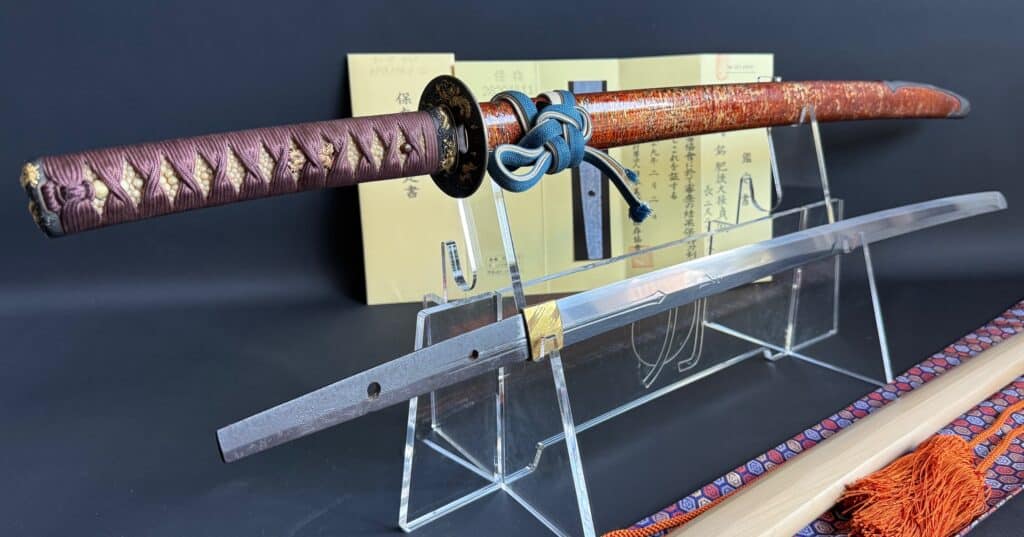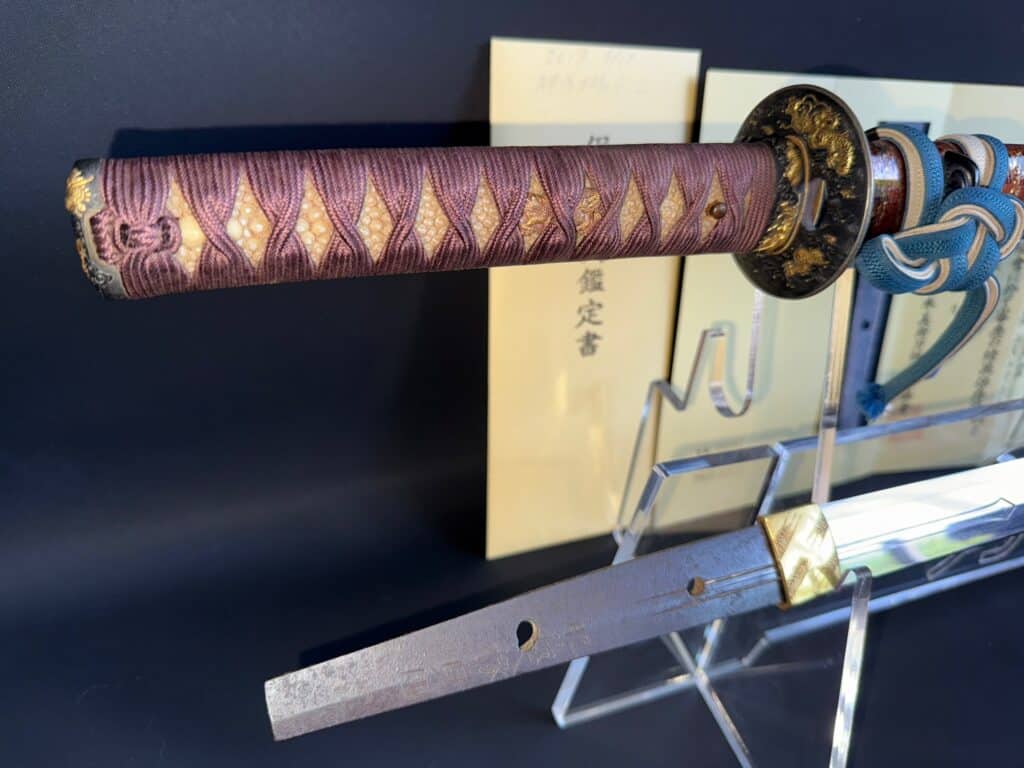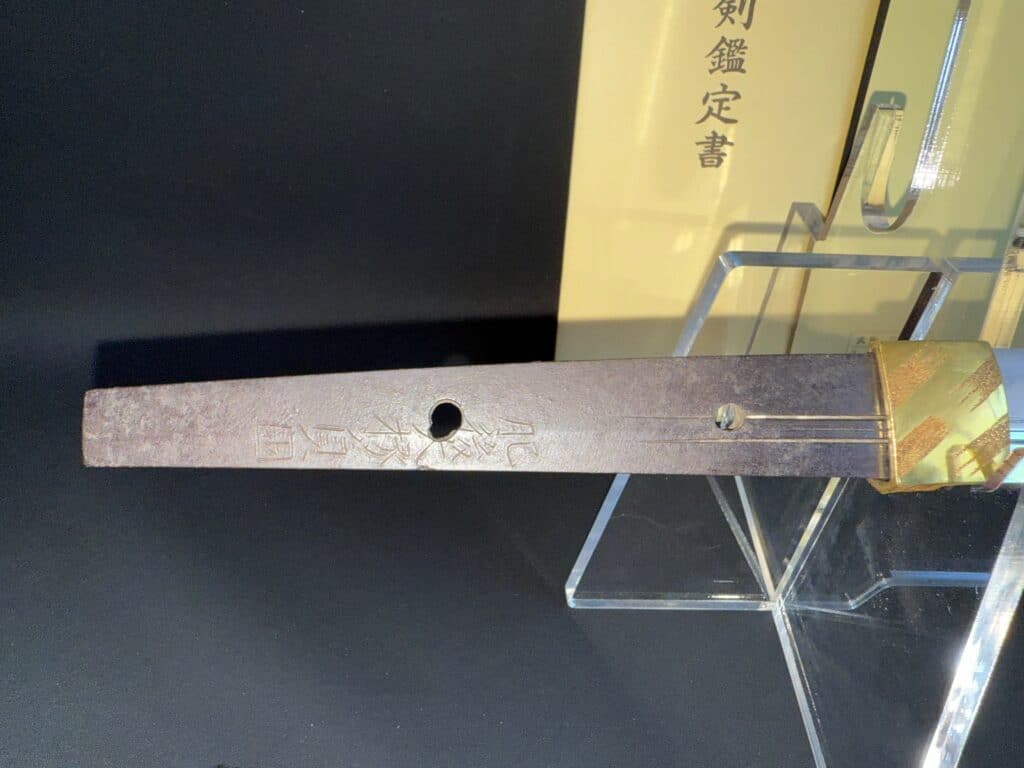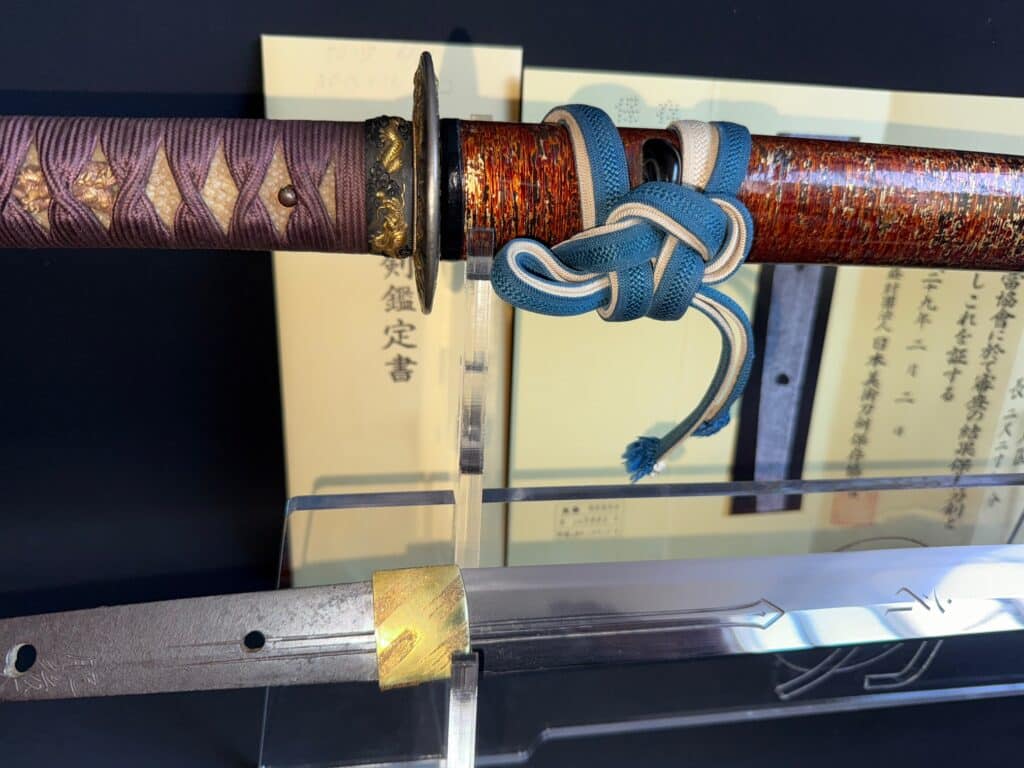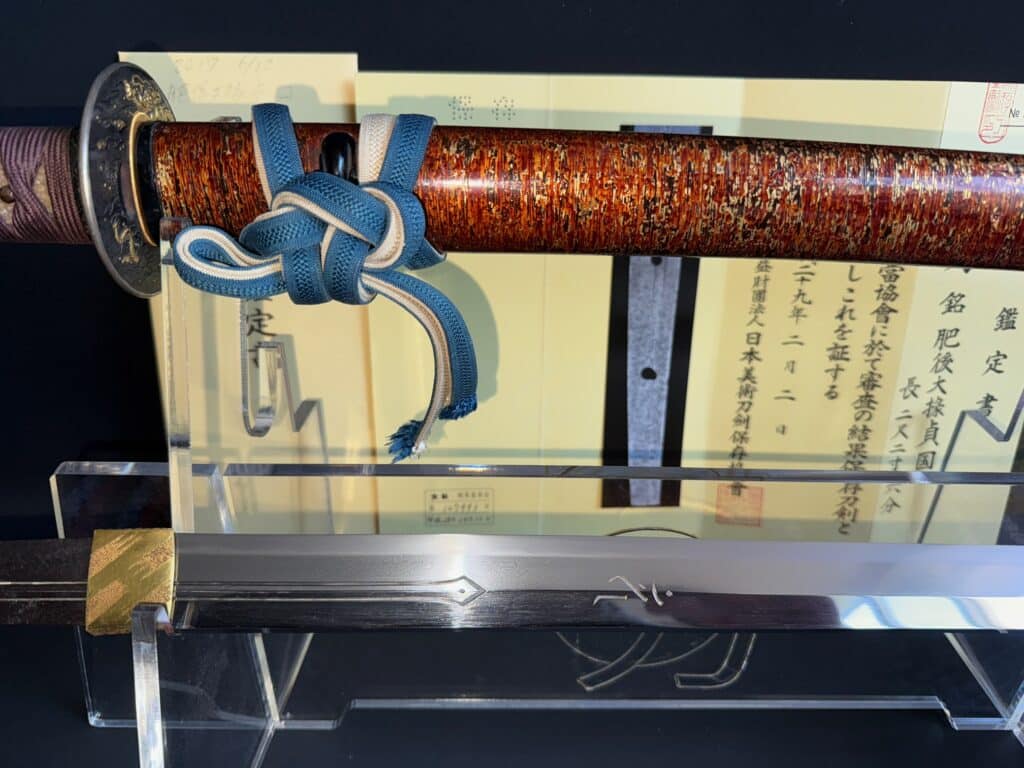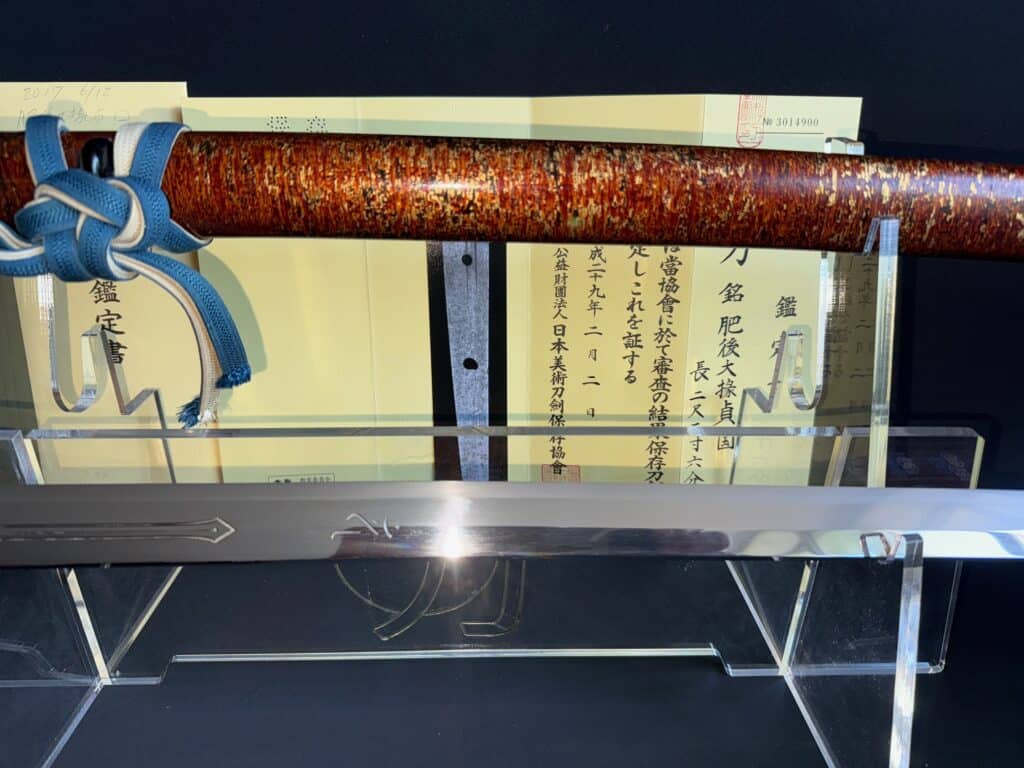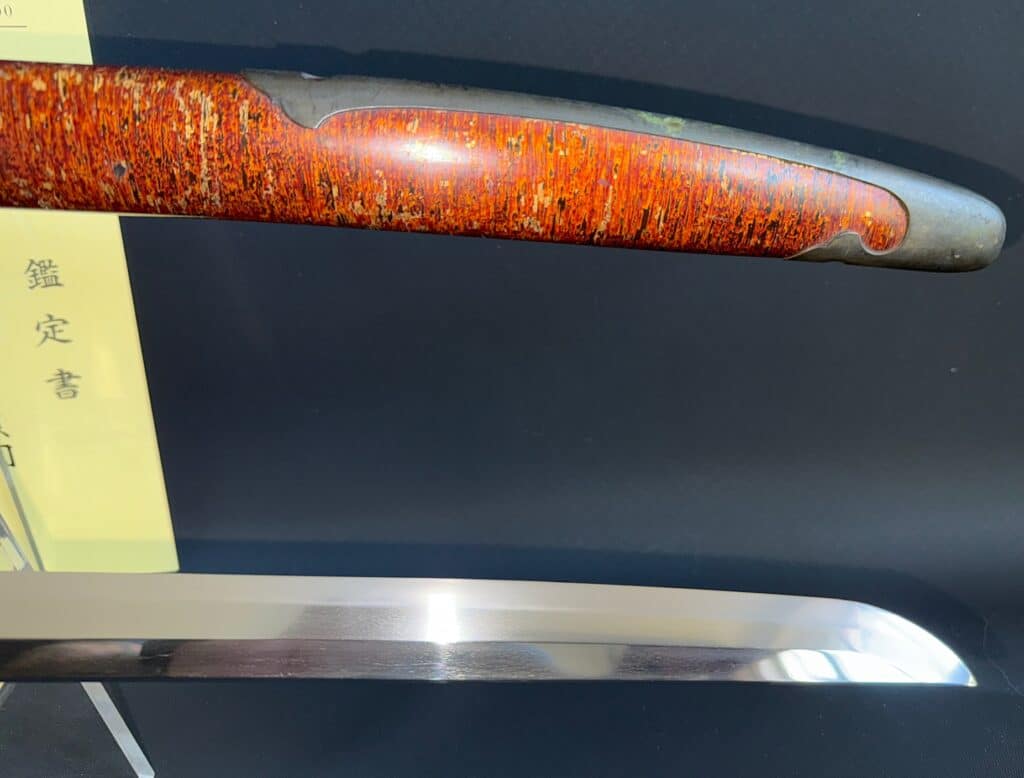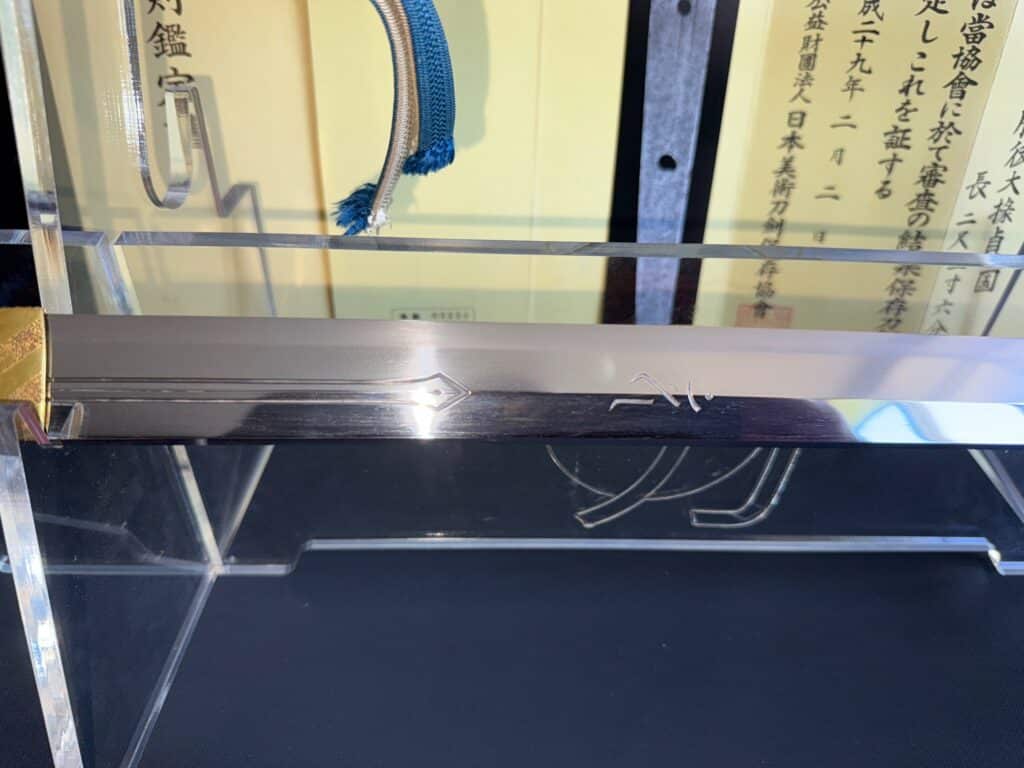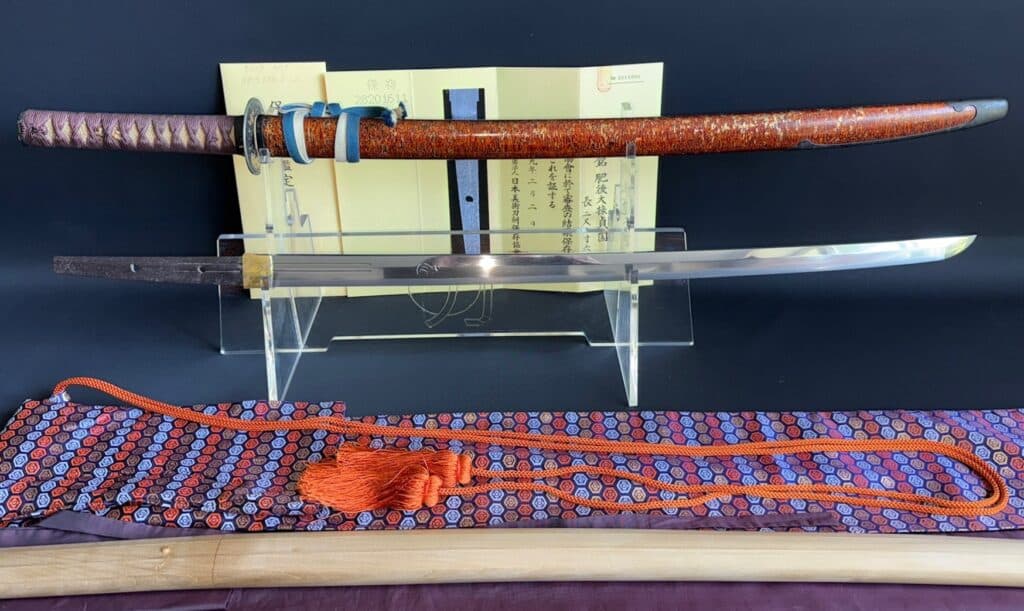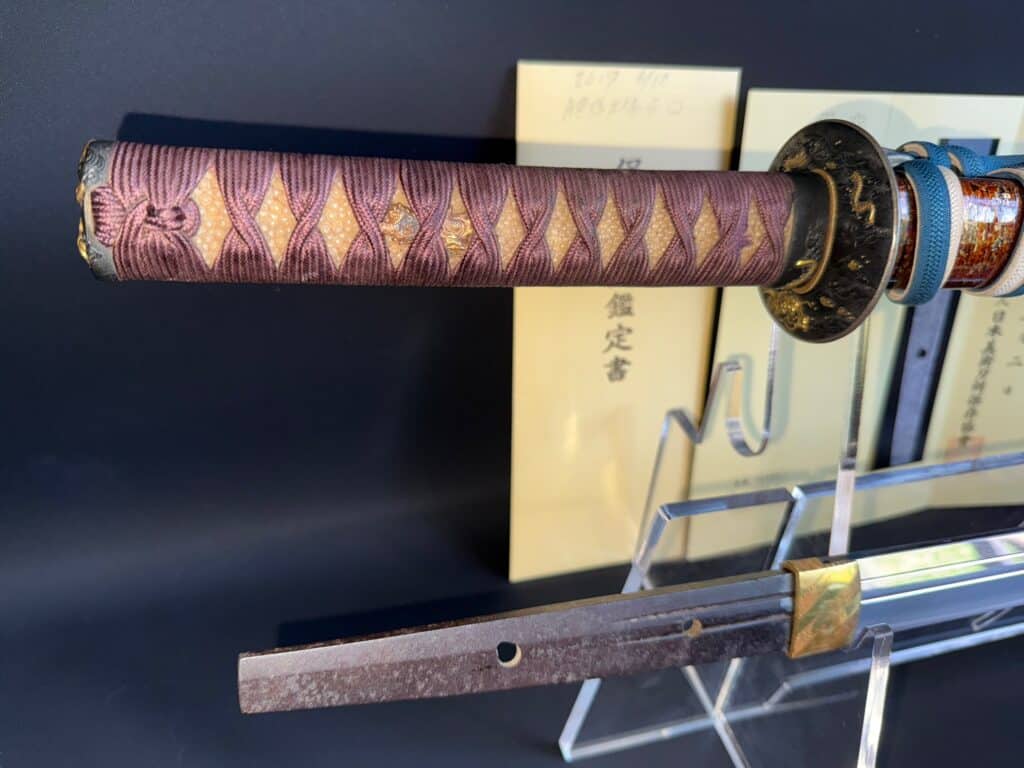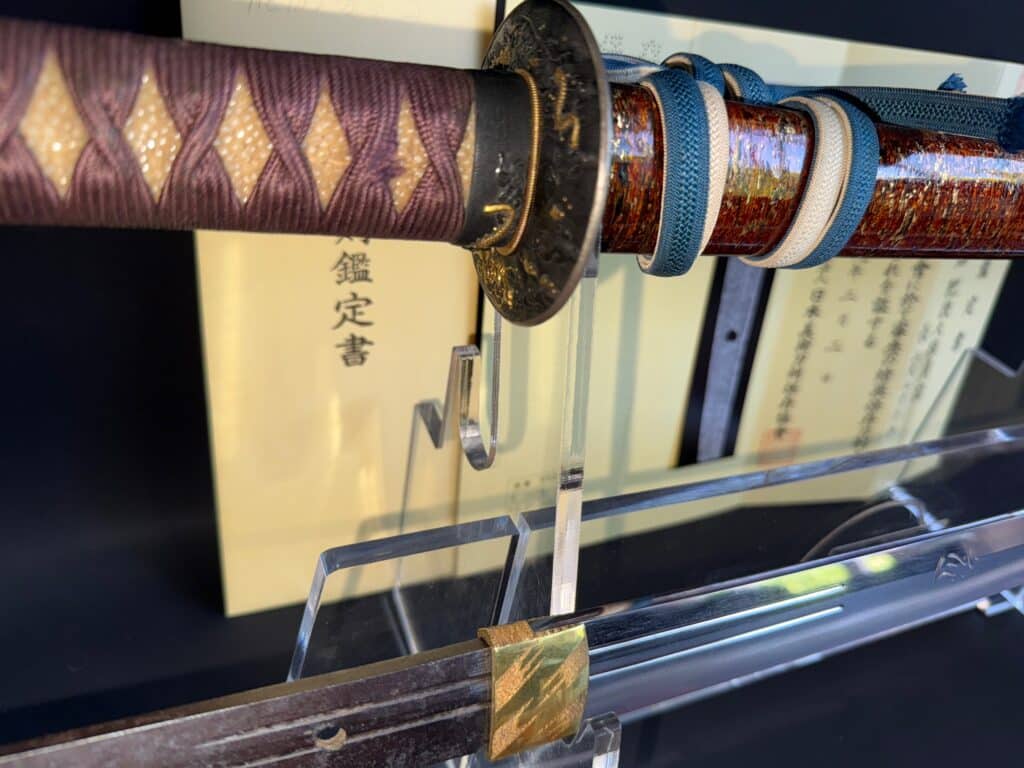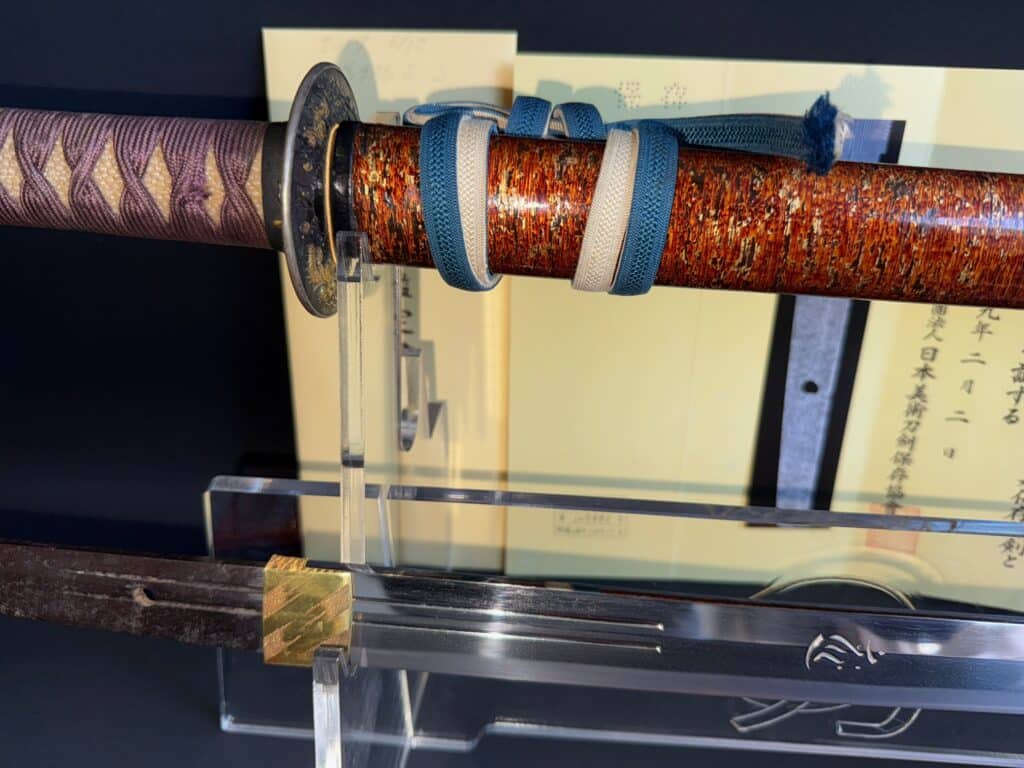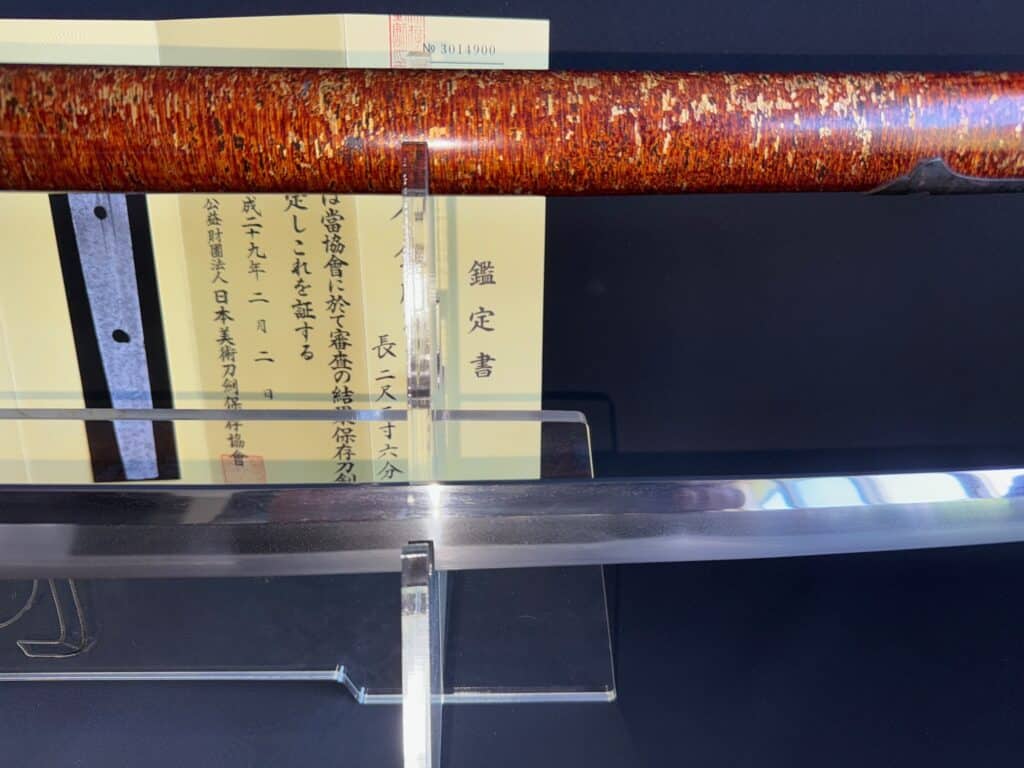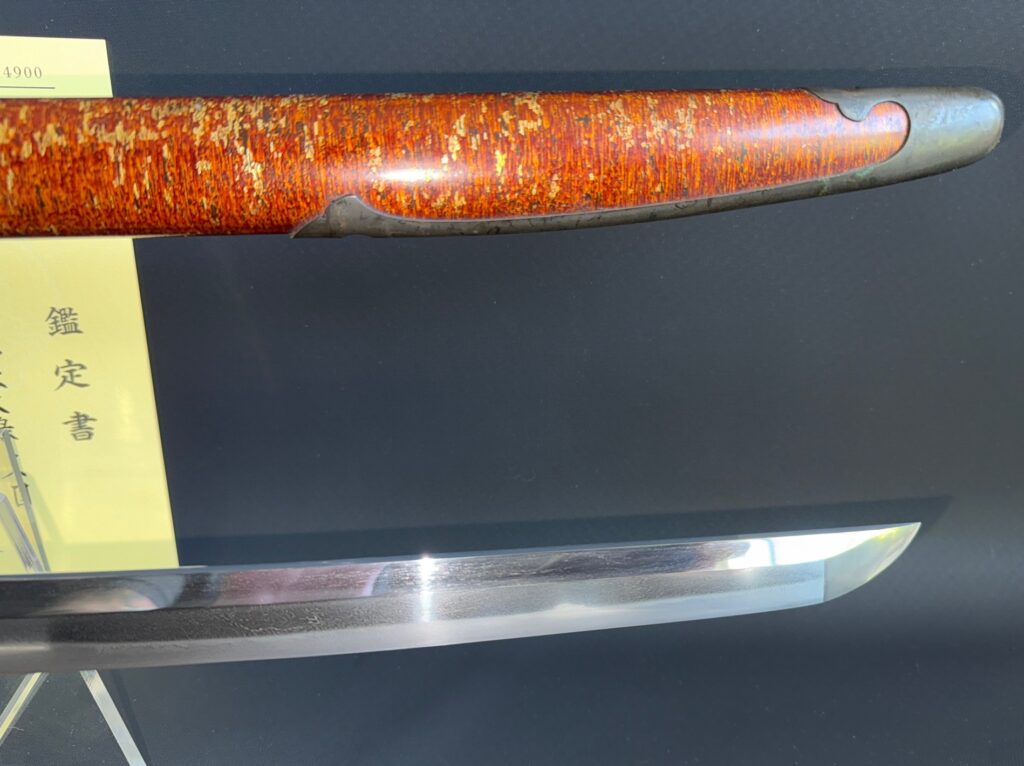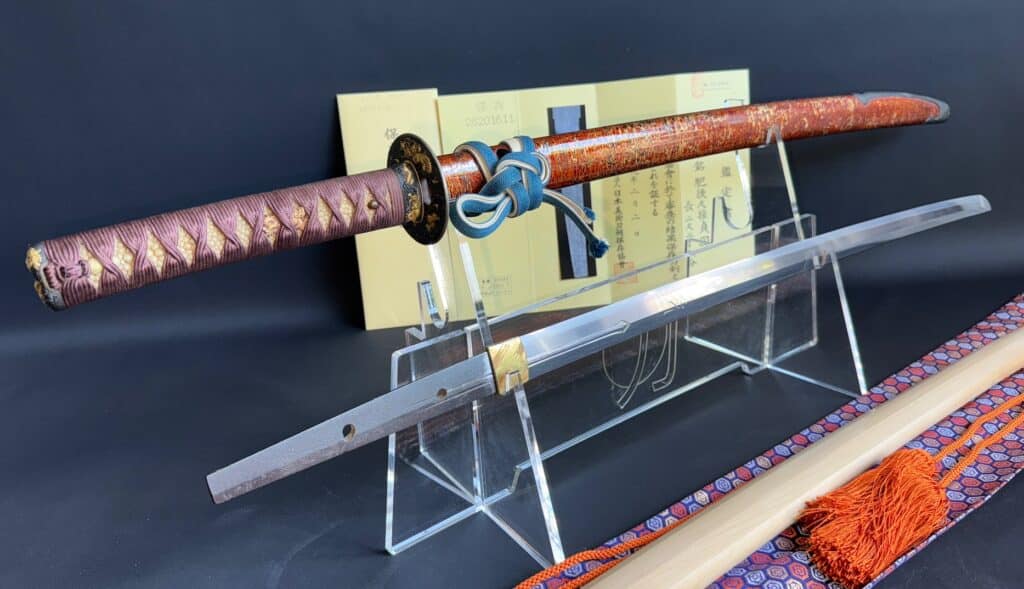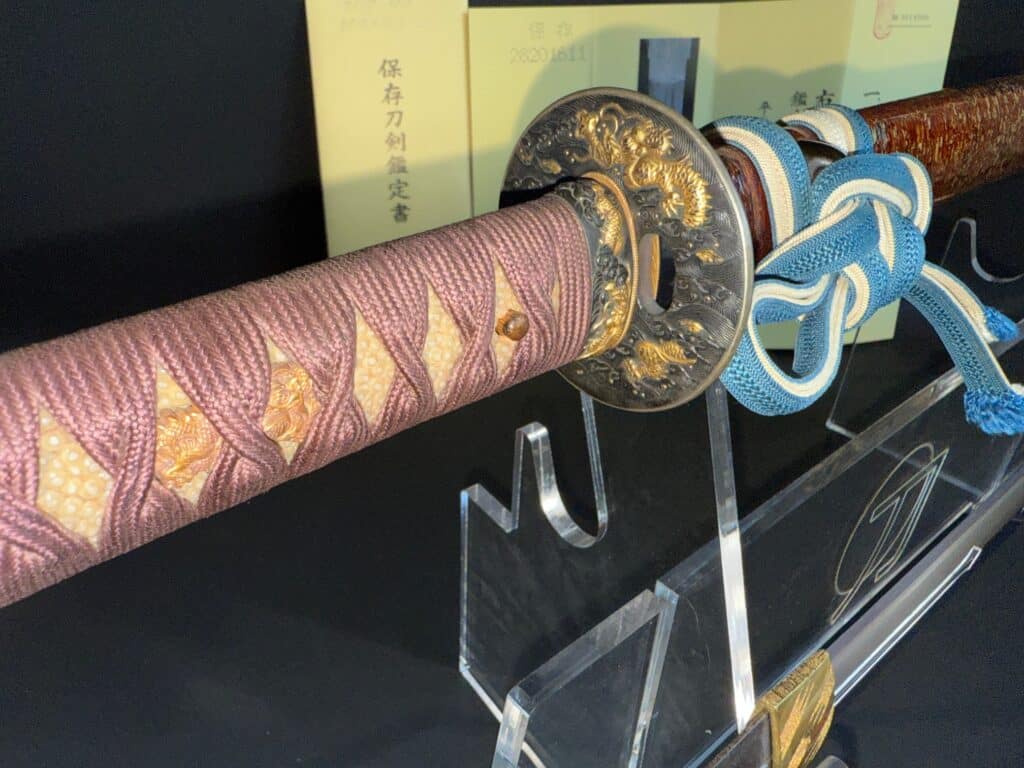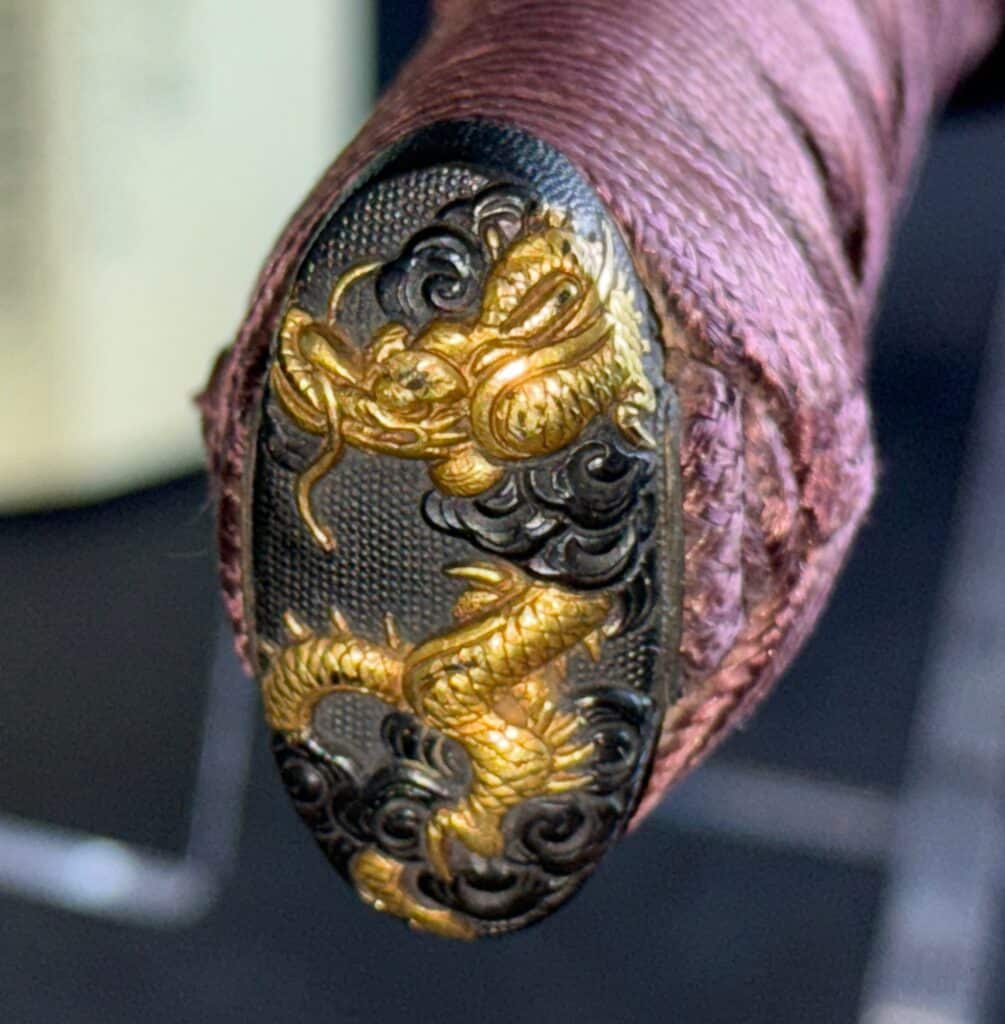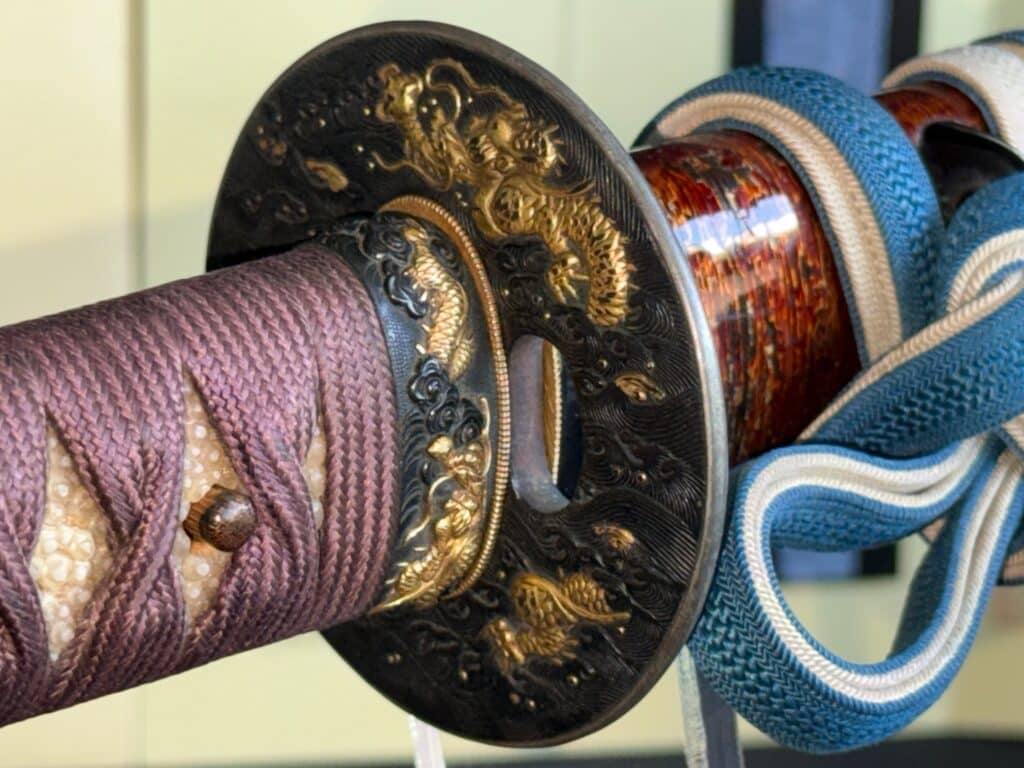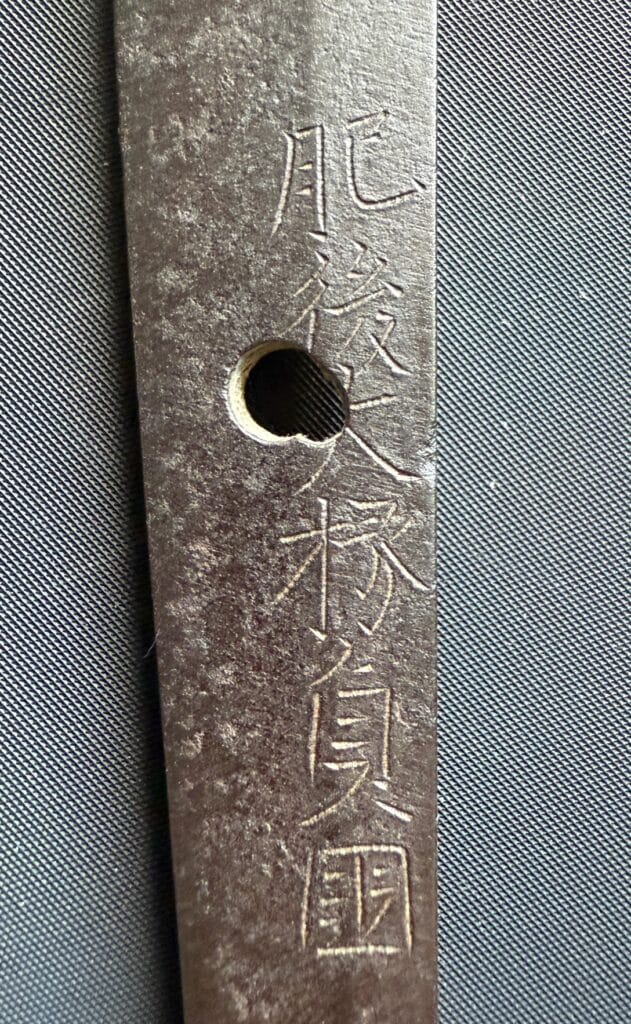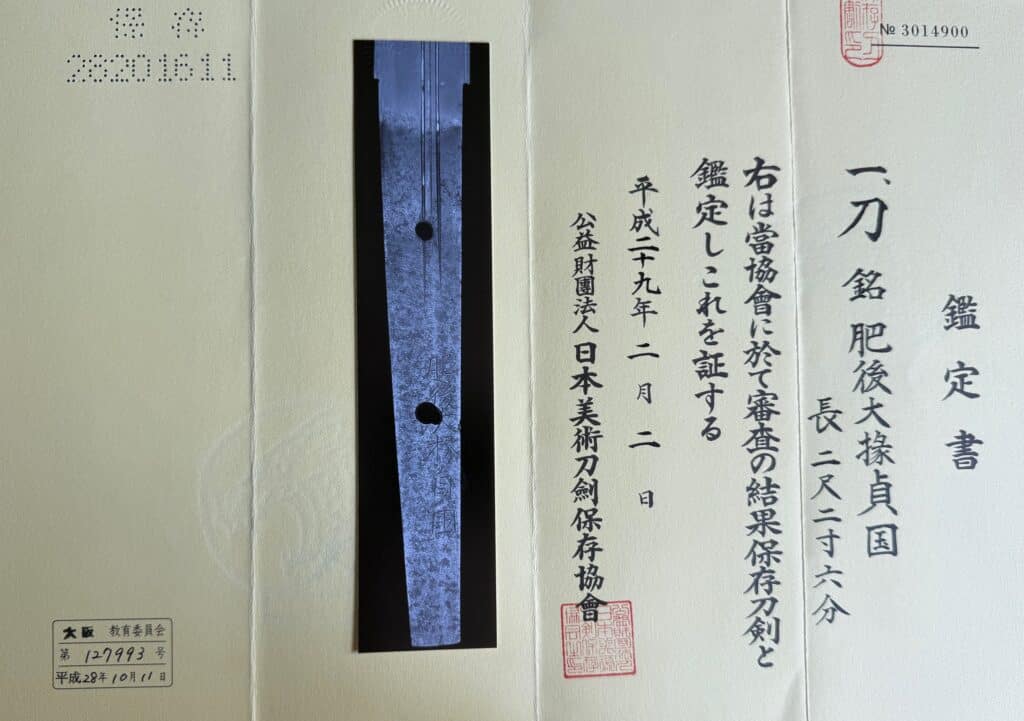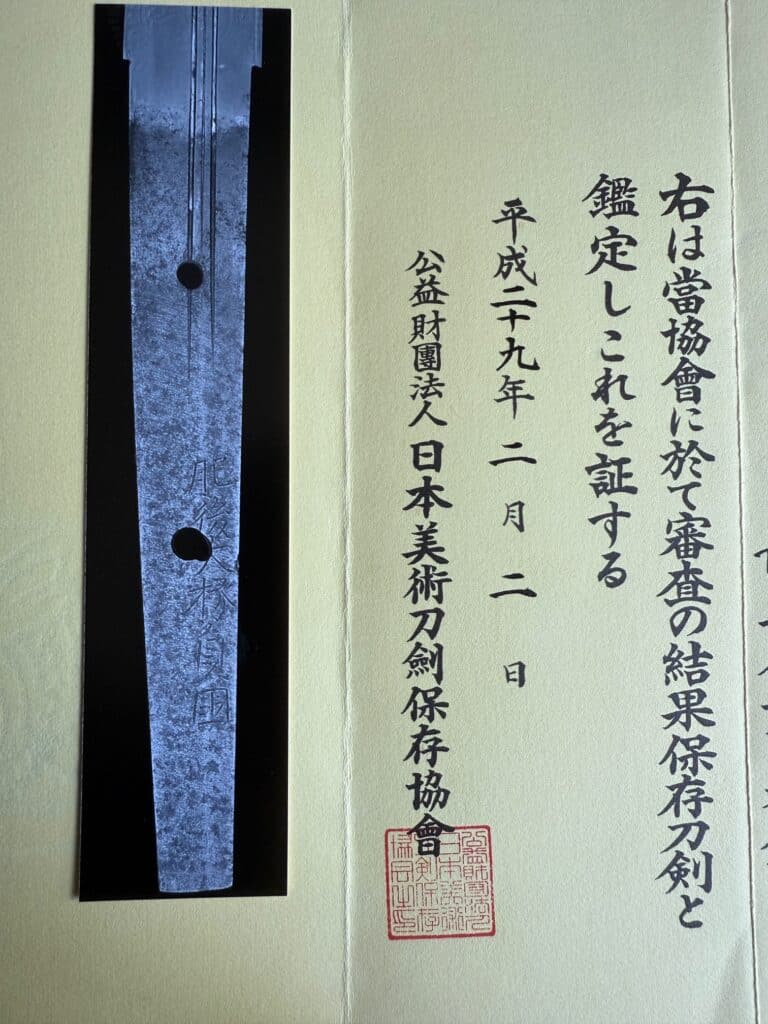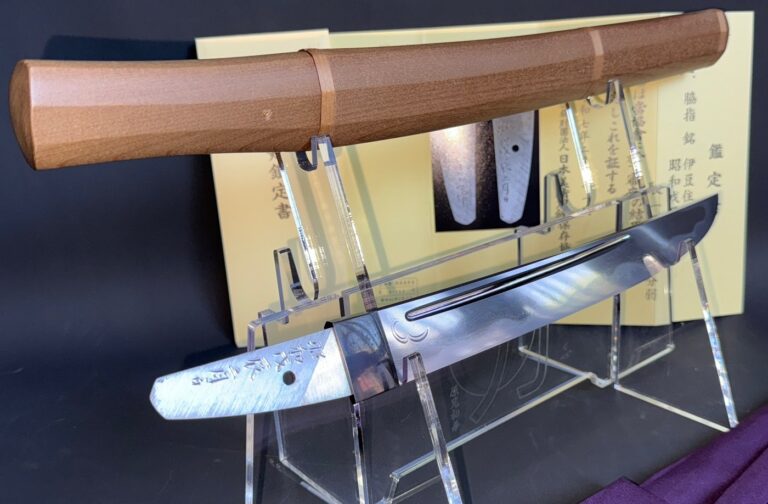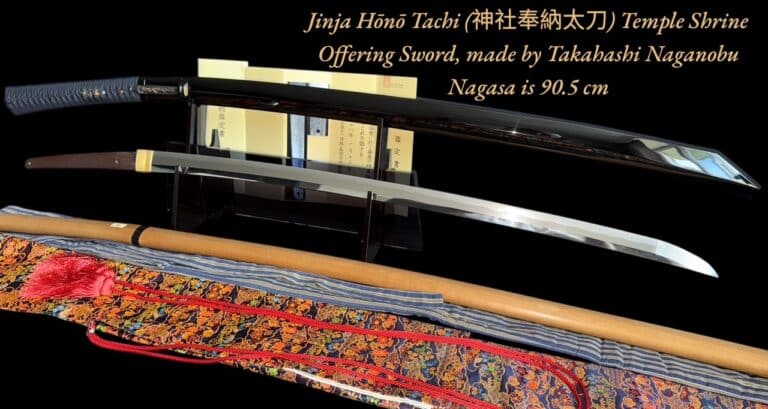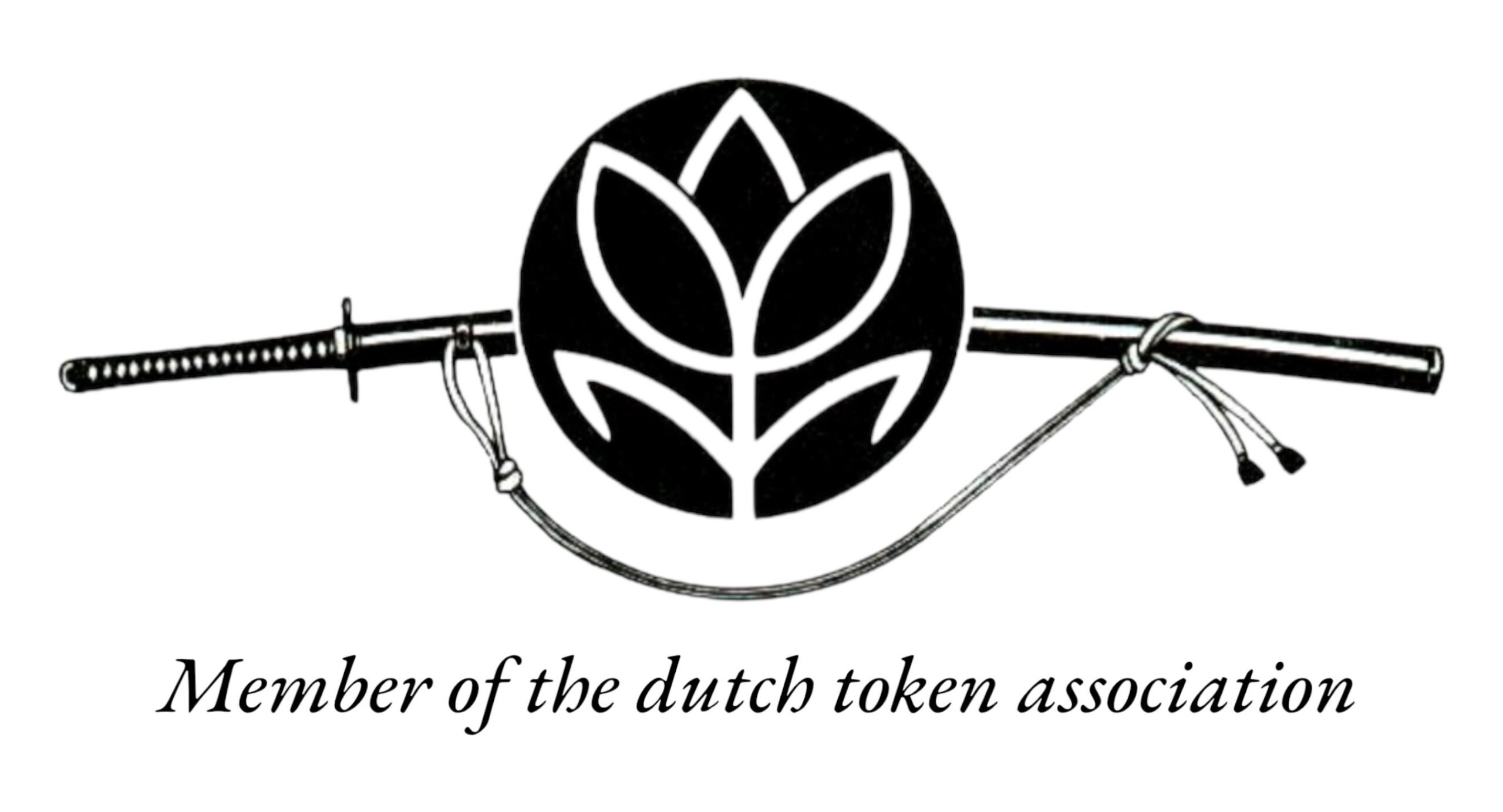Description
Katana by Echizen Ju Hyuga Fujiwara Sadakuni (ca. 1664) – NBTHK Hozon Certified
A signed and NBTHK Hozon papered katana from the Kanbun-Shinto period (ca. 1664) by Sadakuni, a renowned smith of the Echizen Settsu Yasutsugu school. This piece exemplifies the typical features of the Kanbun-Shinto style—a relatively straight, elegant blade optimized for thrusting, reflecting changes in Edo-period martial techniques.
Features & Highlights:
-
Signature (Mei): Echizen Ju Hyuga Fujiwara Sadakuni
-
Period: Kanbun-Shinto (~1664)
-
School: Settsu Yasutsugu tradition
-
Province: Echizen
Blade Specifications:
-
Shape: Shinogi-zukuri
-
Nagasa (Length): 68.7 cm
-
Motohaba (Width at Base): 3.2 cm
-
Kasane (Thickness): 0.58 cm
-
Sori (Curvature): 0.7 cm
-
Hamon: Tight Suguha with Ashi and Yo
-
Jihada: Beautiful Ko-Itame with Jinie
-
Horimono (Carvings): Futasuji-Hi Bo-Hi and Ken-BoHi with Buddhist Sanskrit characters
-
Nakago: Suraged / Machiokuri (shortened), with 2 mekugi-ana, no forging flaws or damage
Mountings:
-
Koshirae: Excellent Topei model, well preserved
-
Saya: Urushi lacquered Sakura-bark style, featuring a long Kojiri
-
Tsuka: Dark brown ito over ray skin
-
Fuchi, Kashira & Menuki: Shakudo, gilded with dragons in high relief
-
-
Tsuba: Shakudo Maru-gata, with gold dragons in high relief
-
-
Habaki: Gold foil-wrapped, high-quality construction
-
Shirasaya: New, with matching tsunagi (wooden blade replica)
Historical Significance:
Sadakuni is regarded as an important smith of the early Shinto period. Some sources suggest he was a peer or even a student of the famed Yasutsugu, while others propose that he was teacher to Kotetsu, another legendary name. His blades are often noted for their excellent forging and resemblance to Yasutsugu’s work, particularly in horimono and hamon execution.
This sword is a rare and particularly well-preserved example of Sadakuni’s craftsmanship, complete with high-quality koshirae and NBTHK Hozon authentication.

